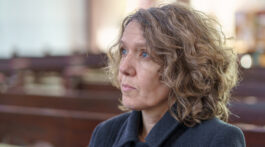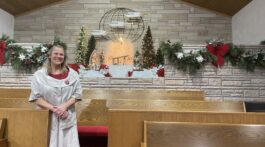The COVID-19 pandemic—which has postponed our General Conference Session and will impact church budgets—makes it necessary to take a careful look at the future of the Adventist Church around the globe.
However, any discussion of significant structural changes within Adventism is like hiking in the woods with small children. There are constant yells to stay on the path, because to veer off anywhere else risks touching a diabolical foliage that dispenses rashes. People are afraid of rashes that include but aren’t limited to congregationalism, loss of mission work, loss of a world church family connection and, of course, loss of jobs. Spiritualism is probably in there too because that’s what we tend to label everything that makes us uncomfortable.
I have heard arguments on all of these, and all have merit…to a point. Yet, at times I wonder if some of these intense fears of, say, a congregationalist rash, are more smokescreens from certain administrators terrified they may end up placed back in the pastorate. That isn’t a totally “irrashonal” fear. Many who end up in administration have survived horrible parish traumas, and returning to that world triggers their worst memories. Let’s be honest, we have wonderful churches and we have churches that emotionally and spiritually cannibalize each other.
Fear: A barrier to growth
By now someone reading this has broken out into a rash of thinking I don’t support the biblical gift of administration (1 Cor. 12:28). Not true. Which brings me back to the major hurdle we face in our attempts at discussions on church policies/processes/structures and potential change: fear. All the fears seem to revolve around the potential loss of identity—whether for individuals in certain positions or for a structure we feel is ordained by God and that makes us who we are and defines our mission.
Mercifully, Adventists have not elevated current church structures and programming to the level of fundamental beliefs. Yet questioning church tithe processes or the various functions of departments feels dangerously close to unraveling traditional baptismal vows, which link otherwise thoughtful language on stewardship and remnant theology explicitly to church organization. In the minds of many, there is little social distancing between our theological statements and the current practical mechanics of our ecclesiastical structure.
Therefore, any change in structure or process is seen as a change of theological identity—as if Adventism (or any movement) is supposed to look exactly the same for hundreds of years. We forget that everything—from The Great Controversy (at least four versions of the book exist) to our Fundamental Beliefs to even our very own church structure—has gone through revisions, more than once. Ironically, when we first formed a structure, a large portion of our people considered organization equivalent to “Babylon,” another term we throw around at anything that scares us or makes us feel uncomfortable.
Innovation, creativity and disruption
Change and growth is as much a part of our identity as anything else, but sadly so is being forced to change by external circumstances (see Organizing for Mission and Growth by George Knight). Now once again, we find ourselves under external pressure. It has literally taken a pandemic to move some of us to evaluate whether our church is merely programs and committees or people; whether all our church meetings that involve large travel budgets are necessary and require everybody to attend; whether some practices are necessary and whether some are just nostalgic. But, it has also opened the door for new innovation, creativity and a disruption of complacency.
This process is painful—I don’t dispute that. We need to grieve the lost “normals” that gave us comfort. But it’s a process that gets more painful the longer we put it off.
The good news is we have been here before. We have adapted due to external pressures, and we have emerged stronger. We know we can streamline processes and reduce overlap of resources. We can also value diversity and embrace new technologies and processes as we focus on building up local congregations.
That gives me comfort and courage. I have heard courage described as not being the absence of fear, but facing the challenges ahead in spite of it. It’s certainly work; but perhaps this season will help us let go of many of the things that have prevented us from working together.










